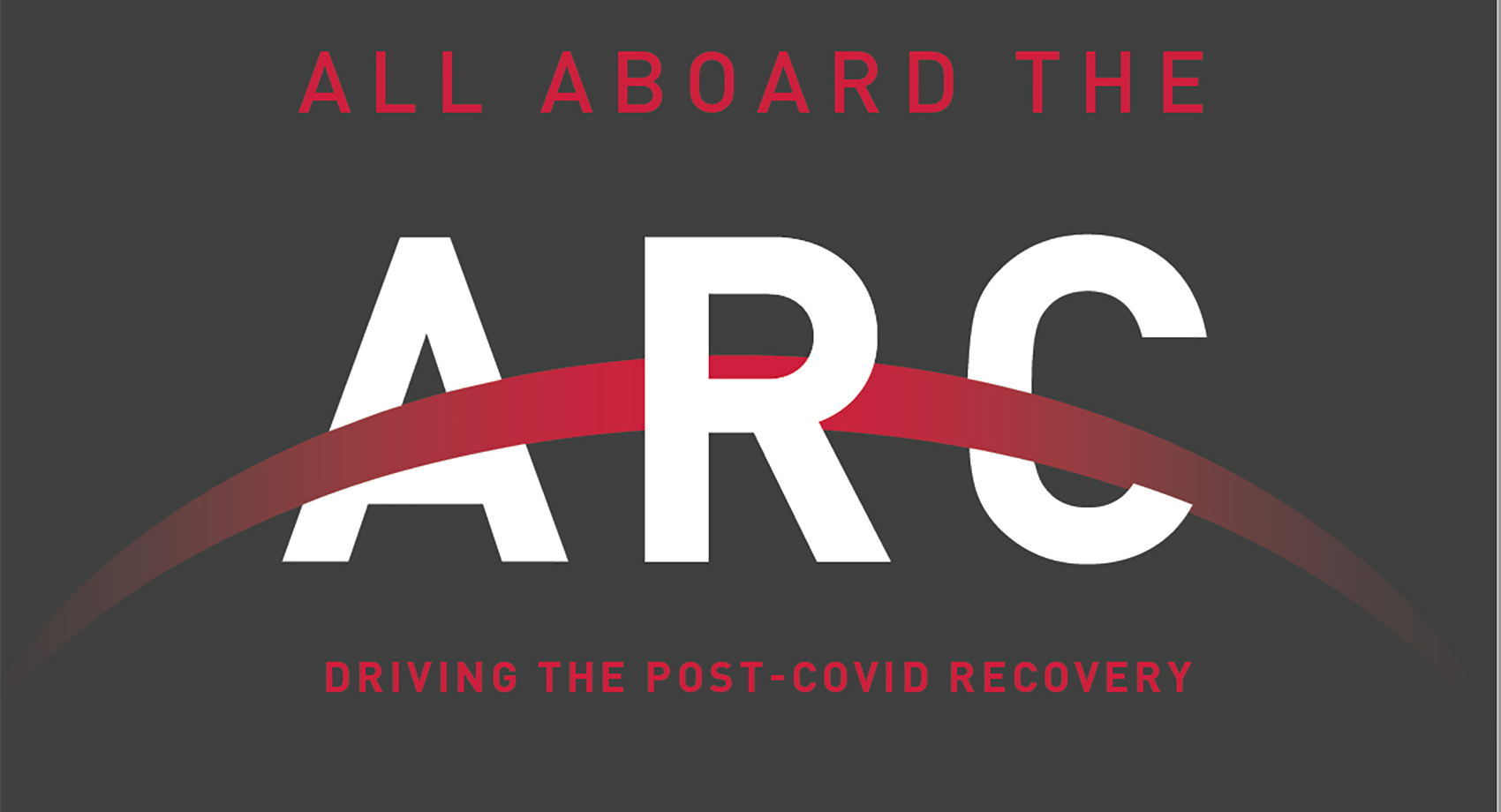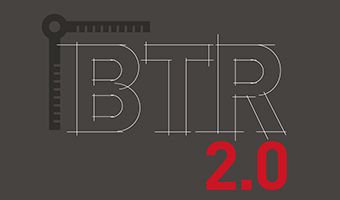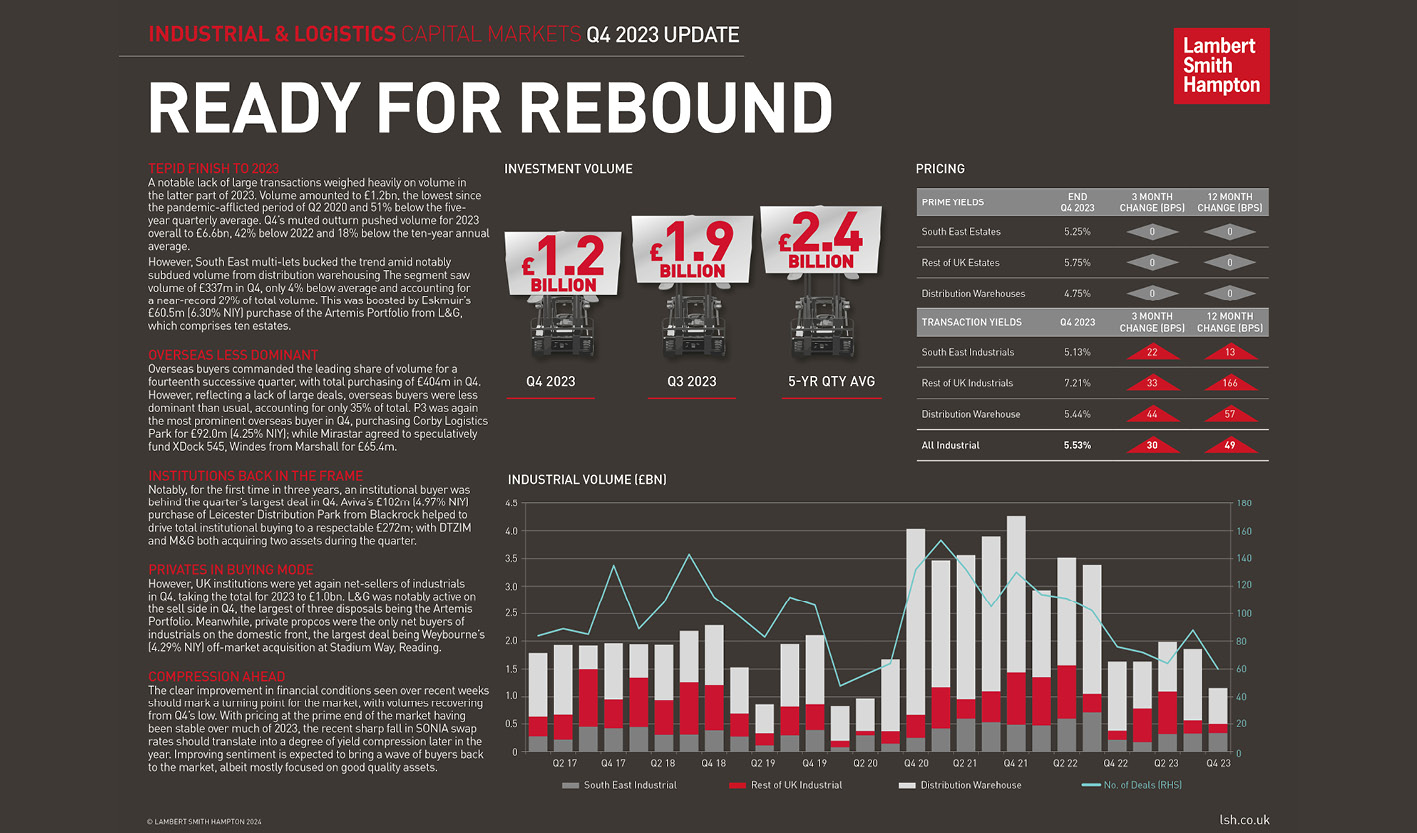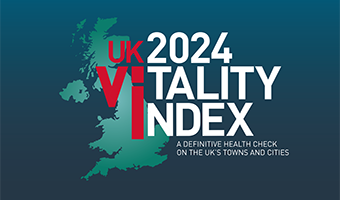Clusters of Expertise
Most of the Arc’s major industries are clustered in particular geographic areas of the Arc. Some sectors, such as life sciences, are naturally concentrated around Cambridge and Oxford as many companies began as university spinouts, and continue to have strong connections with the universities.
Other industries are clustered elsewhere within the Arc; Silverstone is the focal point for a world-leading motorsport sector, Cranfield University is at the heart of aerospace expertise, and Central Bedfordshire is home to a food technology cluster. The clustering of businesses from the same industries helps to improve the availability of skilled labour, encourages collaboration and knowledge-sharing between firms, and creates supply chain efficiencies.
However, the interconnections between clusters in different industries are also increasingly important, with new disruptive technologies blurring sector boundaries. Research into autonomous vehicles, for example, has applications across several of the Arc’s key sectors including space, aerospace, future transport and logistics.
Rather than viewing the Arc’s clusters in isolation, future plans for the Arc should strive towards a vision of a network of connected clusters. The movement of knowledge and expertise between clusters can enable such a network to become more than the sum of its individual parts.
Resilient Sectors
Sectors where the Arc is strong have proved to be relatively resilient during the COVID-19 pandemic. The education, scientific and technical, human health and information and communication sectors, for example, have been among those with the lowest proportions of furloughed employees.
The Arc’s bioscience expertise has come to the fore in the search for a COVID-19 vaccine, but other sectors have also played important roles in the response to the virus. Companies across multiple industries have helped to source and manufacture personal protective equipment (PPE).
The benefits of cross-sector collaboration have additionally been demonstrated by Arc-based companies from the aerospace, automotive and medical device sectors coming together to produce medical ventilators for the NHS as part of the VentilatorChallengeUK consortium.
The onus will be on knowledge and technology-based industries to continue to drive the post-COVID economic recovery, especially as some more traditional manufacturing and service sectors are expected to see their declines being accelerated.
Post-Covid Demand
Changed demands on post-COVID workplaces could also play to the Arc’s sector strengths. Many key industries are primarily based at low-density science or business parks, where social distancing practices are considerably easier to implement than in city centre offices.
By offering attractive environments with plenty of open space and varied amenities, the Arc’s business parks are well placed to meet employees’ post-COVID expectations for safe, flexible workplaces that support their wellbeing. Arc locations may also benefit from the potential shift towards ‘hub and spoke’ office models, where companies shift some activity from a London headquarters to smaller regional branch offices.
Maximising Potential
Attracting and retaining talent is key to the continued success of the Arc’s clusters. While the Arc’s universities provide ready-made pools of worldclass graduate talent, encouraging university leavers to remain in the local area is a challenge. A prime obstacle is the shortage of affordable housing in Oxford and Cambridge, which is regularly cited by local employers as an obstacle to staff recruitment. Both cities also face strong competition from London, which acts as a magnet for graduates.
The need for a greater volume of housing for workers is mirrored by a similar need for additional space to accommodate growth companies within the Arc. Cambridge and Oxford both have particular shortages of wet lab and incubator space suitable for new start-ups and early stage firms, and this has delayed their research. A greater volume of flexible lab and office space, available for short periods of time, is crucial to supporting the research of new companies, particularly in the life sciences sector.
The shortage of lab space has only been heightened by the COVID-19 crisis and some inventive solutions, such as the repurposing of industrial buildings, have been needed for COVID testing and research.
Building an International Brand
The limited volume of lab space is notable when benchmarking the Arc against other key international knowledge clusters. The Boston-Cambridge life sciences corridor in the US has over 15m sq ft of lab space; more than three times as much as Cambridge and Oxford combined.
Looking forward, the Oxford-Cambridge Arc should primarily be seen as being in competition not with other UK locations, but with international clusters such as Boston- Cambridge and Silicon Valley. The Arc benefits from lower rents when compared with these markets, but its success in attracting international occupiers and investors must primarily be driven by the strength of its skills, talent and innovation.
Considerable work needs to be done before the Arc has an internationally significant reputation similar to its US competitors. While Oxford and Cambridge individually have very strong global brands, the concept of the Arc is not yet well-known. Developing a powerful international brand for the Arc, based around the strength of its knowledge industries, is a key priority.
Sector Focus: Life Sciences
The Arc is home to two world-renowned life sciences clusters, in Cambridge and Oxford. The Cambridge cluster is the larger of the two, with over 430 companies employing more than 15,000 people, contributing around £3bn a year to the UK economy.
The Cambridge life sciences cluster is built on the strengths of the University of Cambridge and the city’s specialist research institutes and hospitals. Life science companies are located at a series of science parks in and around the city, with most of the bioscience focused parks being to the south of Cambridge, including Granta Park, Babraham Research Campus and Chesterford Research Park.
A key emerging hub is Cambridge Biomedical Campus, close to Addenbrooke’s Hospital in south Cambridge. It hosts the recently relocated Royal Papworth Hospital, and AstraZeneca’s new global headquarters which is expected to reach practical completion in 2021. The wider Cambridgeshire cluster extends to Huntingdon, where the contract research organisation Envigo is the most notable occupier.
Case Study: Granta Park
Granta Park is a world-leading science base located on a 160 acre site, approximately seven miles south of Cambridge.
Major life sciences companies at the park include Cancer Research, Gilead Sciences, Sosei Heptares, PPD Global and AstraZeneca, while the leading genome sequencing company Illumina recently moved into a new purpose built 174,000 sq ft EMEA headquarters building. Granta Park also provides office and laboratory space for smaller start-ups, and it is home to a 300 seat conference centre, a Montessori nursery, a newly opened 40,000 sq ft fitness and wellbeing centre operated by Nuffield Health and two restaurants available to all of the tenants. Granta Park is owned by BioMed Realty, a Blackstone portfolio company since 2016 and the leading provider of real estate solutions to the life science and technology industries. BioMed Realty owns an extensive 11m sq ft of operating assets, with 2.6m sq ft in active development, in major US life sciences clusters such as Boston-Cambridge, San Francisco and San Diego. BioMed Realty entered the UK market in 2012 with its acquisition of Granta Park. Since then, it has also acquired a building at Cambridge Science Park and most recently has launched BioMed@Babraham, a partnership with the Babraham Research Campus that has seen the delivery of 108,000 sq ft of fully fitted research lab space and counts RxCelerate, Inivata, Mission Therapeutics, PetMedix and Artios Pharma as tenants.
“Cambridge is the UK’s leading life sciences cluster, sharing many characteristics with BioMed Realty’s core US markets. This made it the ideal target for our international expansion. Since acquiring Granta Park in 2012, we have invested to make it an inspirational environment providing a unique work-life balance and have increased the area by approximately 200,000 sq ft to 815,000 sq ft. The park continues to see expansion and investment, and it offers significant designand- build opportunities with the next new building targeted to be completed in 2021. Furthermore, our new flagship development at the Babraham Research Campus is already more than 75% let underlining the strength of demand for high quality life sciences space in Cambridge.”
MATT SMITH
Leasing Director, BioMed Realty
Sector Focus - Space
The UK’s growing space sector is a £14.8bn industry that encompasses a range of organisations engaged in the manufacture, launch and operation of satellites or spacecraft, and in the utilisation of satellite signals and data.
The Harwell Campus Space Cluster in Oxfordshire is a national and international focal point for the sector. Companies engaged in space-related research are also located nearby at Culham Science Centre, while there is a growing space cluster at Westcott Venture Park in Buckinghamshire. Additionally, the UK Space Agency’s headquarters are just outside the Oxford-Cambridge Arc, in Swindon. The space industry has strong connections with related sectors in the Arc with, for example, advances in rocket research also having applications in the aerospace.
Case Study: Westcott Venture Park
LSH works on behalf of Patrizia as the managing agent of Westcott Venture Park, which is developing into an increasingly important hub for the UK space industry.
“Companies in the Westcott Space Cluster are conducting exciting, cutting edge research. Much of this is focused on innovative technologies such as unmanned aerial vehicles (UAVs) and next generation communication networks. There is an opportunity to create a world-class space centre at Westcott, and we expect to attract a growing number of high-tech companies and start-ups to the cluster.”
ROD MORDEY
Director and Head of UK AssetManagement at Patrizia
Case Study: Harwell Campus
The Harwell Campus Space Cluster is at the heart of the UK and European space industry, with 105 space organisations employing over 1,100 people. Major public space organisations at the campus include the European Space Agency (ESA ESCAT), the Rutherford Appleton Laboratory, the Science and Technology Facilities Council’s RAL Space facility, and the Satellite Applications Catapult.
Global space companies such as Airbus Defence & Space and Thales Alenia Space also have a presence at Harwell, while smaller enterprises and start-ups are supported by the ESA’s Business Incubation Centre. The Space Cluster is one of three at Harwell, alongside its HealthTec and EnergyTec Clusters. Between them, the three clusters comprise 162 organisations. Almost a third of these are active in more than one cluster, providing avenues for the transfer of technologies between sectors. The cross-pollination of ideas between clusters is aided by Harwell’s world-leading, open access scientific facilities, which are used by researchers across multiple disciplines. These include Diamond Light Source, the UK’s national synchrotron, which is capable of producing light 10 billion times brighter than the Sun. LSH has been instructed to provide agency, marketing and development advice at Harwell since 2013, helping to support the growth of the campus during this period. With a 700-acre site, Harwell has considerable potential for further expansion. Already Europe’s most concentrated space cluster and the UK’s space gateway, it has an ambitious target of having 200 space organisations, employing 5,000 people, by 2030.
Recent investment in Harwell Campus will boost this ambition. In Q2 2020, Brookfield Asset Management, one of the world’s largest property groups and asset managers with interests in MIT and Canary Wharf, acquired the private sector half shareholding in the joint venture which manages and develops the campus. Brookfield has committed to deliver an additional 1.5m sq ft of accommodation by the mid-2020s, which will enable the campus to continue expanding its roster of national and international companies looking to grow at pace and scale across its multiple clusters.
“Harwell Campus is a beacon of the UK knowledge economy. It is a science and innovation district the size of a small town with outstanding people, world class facilities and unrivalled access to open source national laboratories and supercomputing resources.”
ANGUS HORNER
Harwell Campus
Sector Focus - Motorsport
‘Motorsport Valley’ is a globally-important high performance technology and motorsport cluster centred on the Silverstone racing circuit in Northamptonshire.
The region is home to the largest concentration of Formula One racing teams in the world. Six of the ten F1 teams have bases in the Arc, with Williams, Renault and Haas in Oxfordshire; Mercedes and Racing Point in Northamptonshire; and Red Bull Racing in Milton Keynes. Every F1 champion since 2009 has come from a team based in the Arc.
The region’s motorsport industry has synergies with broader expertise in advanced manufacturing and automotive engineering. Companies with strong links to the motorsport sector include Cosworth and MAHLE Powertrain, both headquartered in the Northampton Waterside Enterprise Zone, and Prodive, based in Banbury.
Silverstone Park, adjacent to the motor racing circuit, is a growing hub of activity, and its owners MEPC have ambitions for it to become a global destination for high performance technology. The Silverstone Technology Cluster organisation has been established to support the growth of the high-tech cluster in and around Silverstone.
Sector Focus - Digital Technology
Oxford and Cambridge have the Arc’s largest clusters of digital industries, but this sector is a major part of the economy across the region.
Well-known companies with offices in the Arc include McAfee in Aylesbury, Rightmove in Milton Keynes and Compare The Market in Peterborough.
The Oxfordshire digital cluster has strengths in gaming, software development and cybersecurity, with prominent companies such as Rebellion Games and Sophos, whose UK headquarters are in Abingdon. Other major companies with offices in Oxford include TripAdvisor and Nominet, while there are numerous smaller spinout companies from the University of Oxford.
Cambridge is home to the well-established ‘Silicon Fen’ information and digital technology cluster. While life science companies are increasingly focused to the south of the city, the business and science parks accommodating digital technology companies are generally to the north, east and west. Key locations include Cambridge Business Park, where occupiers include Qualcomm and Micro Focus; and St John’s Innovation Park, with companies including Samsung and Raspberry Pi.
A growing technology cluster has also emerged in recent years at the regenerated CB1 area in central Cambridge. This was kick-started by Microsoft Research’s decision to relocate its European headquarters to CB1 in 2012. Amazon and Samsung have subsequently opened research centres in the area, while Apple will occupy a new building in 2021.
Sector Focus - Logistics
Logistics activity is spread across the Arc, reflecting the presence of key transport corridors providing connections to many of the UK’s largest conurbations.
Some northern parts of the Arc fall within the ‘golden triangle’, the traditional UK logistics heartland lying roughly between Birmingham, Northampton and Leicester. However, numerous other Arc locations have significant logistics potential, and population growth within the region will create an increased need for logistics hubs serving the Arc’s expanding towns and cities.
Of the Arc’s motorway corridors, the M1 has the heaviest concentration of logistics activity, with a series of major logistics parks at key junctions. These include Prologis RFI DIRFT near Daventry, one of the most important intermodal (rail/road) logistics parks in the UK. Prologis has other major facilities along the M1 at Pineham near Northampton and Marston Gate near Milton Keynes.
The last of these is located close to Gazeley’s Magna Park Milton Keynes, which is home to the national distribution centres of John Lewis and Waitrose. The development of future east-west transport links could further cement Milton Keynes’ status as a major UK logistics hub.
There is also considerable growth potential along the M40 corridor, which has historically been relatively underexploited by logistics developers in comparison with the M1. However, the M40’s route linking London and Birmingham has significant advantages and it benefits from low congestion compared with many other motorways. Major occupiers such as Hello Fresh, The Entertainer, Arrival and Kärcher have all chosen M40 locations in recent years.
Banbury and Bicester, in particular, are emerging as increasingly important logistics hubs along the M40. This is demonstrated by ongoing developments such as Tritax Symmetry’s Central M40, Banbury and Symmetry Park, Bicester; Albion Land’s Link 9 and Axis J9, both in Bicester; and EG Group’s Frontier Park, Banbury.
Get in touch



Email me direct
To:
REGISTER FOR UPDATES
Get the latest insight, event invites and commercial properties by email







